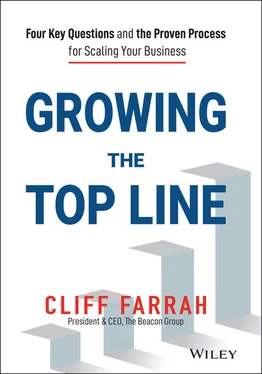Companies pursue geographic growth in a variety of ways, but they boil down mostly to organic and inorganic activity. Organic would be build. Inorganic would be buy. Build‐versus‐buy is generally accepted as a critical decision when considering growth options, and it’s particularly true when you think about the geographies you will serve.
When you pursue geographic growth, you run straight into a number of risks:
Build cost
Regulatory/taxation requirements
Offset requirements
Repatriation challenges
Recruiting talent
Acquisition costs (inorganic)
Distribution ecosystem
Customer acquisition cost
But, like most things that involve risk, there is also reward. By growing geographically you get
Access to entirely new customer base
Diversification of economic risk
Potential for growth at multiple levels
Test bed for new business models
New ideas that can be applied to existing geos
Older, larger companies that have worked through geographic expansion have a tremendous advantage in their ongoing operations that align with these benefits.
There are some really interesting stories out there about epic fails on geographic expansion. Take your pick . . . Target’s withdrawal from Canada after two years and billions of dollars spent. Home Depot’s 2006–2012 failed foray into China. Walmart’s 1997 failed launch of 85 stores in Germany. Starbucks’ 14‐year misstep in Australia. Best Buy’s 2010/2011 failed attempt to grow in the UK. And these misses had massive economic impact on their parent companies, not to mention the damage to brand around the globe.
Does this question hold in a post‐COVID world? The notion of a large‐scale company with an entirely remote workforce changing the dynamic of this risk after the pandemic isn’t so far‐fetched. Several leading companies have announced plans to either entirely or partially have remote staff, with Alphabet, Google’s parent company, considering a hybrid policy of three days in, two days out at the time of writing. 1 There is precedent to refer to as you think about this future state. IBM began experimenting with this in 1979, and in 2009 reported over 40% of its workforce had no physical office. 2 The game changed in 2017, when IBM started to force thousands of workers back into the office. The link between an office setting and productivity concerns had them reverse their position. The notion of work‐from‐home isn’t new. Gallup estimated in 2017 that 43% of workers in the US were remote! The data shows that through these periods, companies continued to expand their geographic footprint, and while during the time of pandemic a number of us are required to be remote, we will continue to see office presence as a key component of collaboration and growth. Assuming there is no health reason to prevent us from working together, as humans we will continue to seek the office environment and in‐person client interactions as the continuing standard for productivity and sustainable growth. That’s why even in a post‐COVID world, despite the likely increase in hybrid workforce, this key question stands.
The statistics are remarkable as you consider the investment required to support international growth. In a 2015 Harvard Business Review piece, Christian Stadler, Michael Mayer, and Julia Hautz estimate that it takes 10 years to generate a 1% return on assets from global expansion! They studied 20,000 companies in 30 countries that attempted this. 3 Wow.
However, I didn’t title this question “which country” – I chose “which geography.” By that I mean simple physical geographic expansion, typically to access a new set of customers. Clearly global or international expansion falls under this umbrella, but so do less glamorous expansions.
A restaurant is a great way to illustrate the levels of choice open to companies considering geographic expansion today. A US business could expand locally (next town over), intrastate, interstate, or internationally. The risk goes up each step of the way. Let’s say you own the best steakhouse in Dallas. With your partner, you’ve decided that you want to add a new location (aka geography) to drive growth. Where do you locate? If you stay within a 30‐minute drive, you get the benefit of people knowing your brand and the option for existing staff to support new operations. Great! But you’ll run out of customers pretty quickly, so what about a new spot in Houston? Still in Texas, so you know your state tax code and requirements, but you can’t leverage your staff, and your brand may not be as good. Let’s say Houston is a hit, and now you decide to be bold and try a move to Atlanta. Suddenly you have to worry about the logistics of remote management, the creation of brand, supplier, employee, and the development of a new customer base. Throw on top of that the added cost of airfare for senior management to run back and forth, the tax ramifications of nexus in another state (may want to look that one up if you don’t know), and the hurdles to clear become much higher. Of course, all new customers and a growing brand, diversification of revenues, and a wonderful marketing tale for your other stores are the potential offset, but the risk factors go up. Clearly the more remote the location, the greater the risk of quality control issues or the dilution of your original vision.
Let’s take it up a notch. What about opening up your next steakhouse in Paris, London, Beijing, or Moscow? Now you have international tax code to become expert in. You also need to meet new legal standards for employees, food production, an entirely new marketing spend. The logistics of management now not only span distance but also time zones, language, and cultural barriers. This is incredibly expensive and risky . . . especially for a restaurant.
But what about other industries?
I had a chance to interview long time client and strategy guru John Beering. I’ve worked with John during his time at Pratt & Whitney (where he served as the Director of Marketing for Commercial Engines and Global Service Providers), Eaton Corporation (as Senior Vice President and General Manager of their Commercial Powertrain business), Trojan Battery Company (serving as Chief Operating Officer), and caught up with him in his new role as President and Board Member of United Access and Arch Channel Retail, the second largest retailer of wheelchair‐accessible vans in the US.
John had been responsible for global expansion in a number of his roles, and I asked him about the realities for industrial corporations considering that kind of move. He reflected on his time at Eaton, serving large automotive and trucking OEM partners like Daimler, Mercedes‐Benz, Volkswagen Group, and Volvo:
I think when we were looking at trying to do a major expansion, China or India would be a good example, you really had to think through method of entry. We’re going to go look at an acquisition? Is a joint venture going to be more appropriate? Is export even viable? If [the answer is] yes to any of those [questions], what is that going to look like? For a JV, what’s the endgame? Can you do it in a way that’s successful? Our preference at the time was majority ownership for joint ventures. Being majority owners allowed us to roll it up and report the earnings. It also meant that we had control over the operating approach. You know, prior to my time there they had some JVs in the same geographies that didn’t go so well. In hindsight, the prior Chinese JVs were either 50/50 or the Chinese partner had the control and so of course they played by different rules. Eaton also made the mistake previously of having a different deal team from the integration and management teams. This meant they lost relationship continuity – which is everything in China. Eaton also maintained a strong culture centered on doing business right – their ethical North Star. Operating in China (or many Asian countries for that matter), where the local leadership’s worldview and business standards and practices are just different than ours. Assuming they will automatically adjust to our Western standards was naïve and unrealistic. This is why the relationships are so important. You need the relationship foundation to establish trust and work through misunderstandings over time. Where we had established bases of operations in China or India, then the challenge centered [on] how to partner more meaningfully with key customers. They might say, ”Let’s do a joint venture . . . and we want the joint venture on site. We probably wanted it on our existing campus to capitalize on our existing investments. The next requirement was if we were going to have a volume commitment from the customer partner to make this business venture work. And then if we take product in the other markets, are we protected on IP and things like that? Among the biggest items in the foreign JVs is protecting IP [intellectual property] and being mindful not to enable a new competitor unintentionally in other established markets. Other important considerations include talent availability, capital and operating costs, tax structure and cash repatriation, currency risk, etc.
Читать дальше












